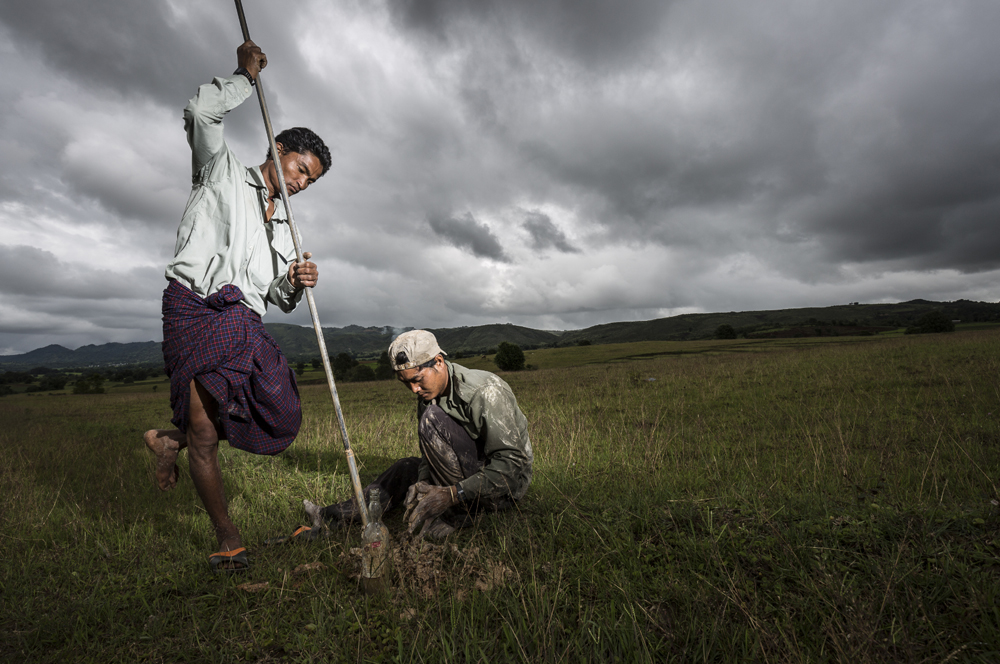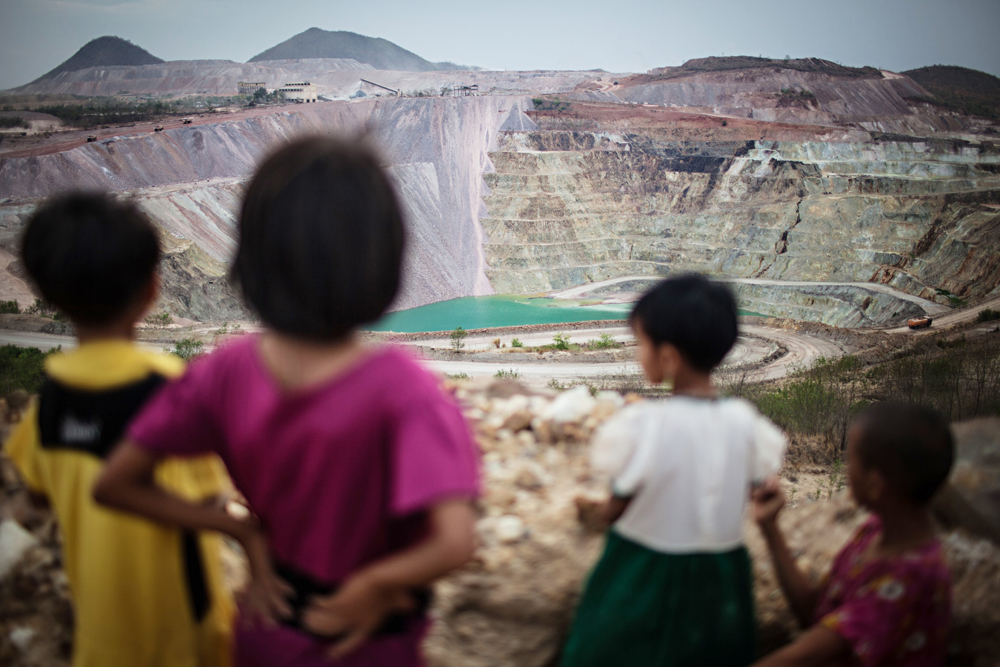
Picturing Poor Extractive Industries Governance in Myanmar, One Year Later
In 2014, the Natural Resource Governance Institute (NRGI) commissioned images by a Myanmar photographer, Minzayar, of the illegal jade miners that have flowed into the country's northern Kachin state in pursuit of higher incomes. The project allowed thousands of viewers worldwide to connect faces to one of the most famously controversial aspects of the country's extractive economy. Because of the attention and interest generated by Minzayar's photos, NRGI has committed to further visually mapping extractives realities in Myanmar.
This year we partnered with six talented photographers (including two from Myanmar) to capture the complex political, environmental and social realities at resource extraction sites throughout the country. NRGI will publish a selection of their photos on its website in a series of six photo releases – one per week – covering the coal, copper, gas, gold, jade and oil industries. (In the near future more photos will be available on a dedicated website that Myanmar Deitta is developing.) Today, we initiate the series with powerful images from one of the most controversial sites in Myanmar, the Letpadaung copper mine.

Workers in Myanmar conduct tests to ascertain the presence of coal. Photo by Suthep Kritsanavarin for NRGI
The country is no stranger to issues and conflict around extractive resources. Mobilizations against the Myitsone dam or Letpadaung mine have attracted international attention, while subsequent reports on jade confirm the severity of illicit trade, corruption, and foregone revenues in the sector. While Myanmar is rich in oil, gas, minerals and other resources, in many cases this natural wealth does not appear to have improved the lives of citizens. Many benefits flow to a small elite with connections to powerful interest groups, including Myanmar military officials and their close business associates known locally as “cronies.”
An agenda for reforming these industries, with the aim to make them more transparent and accountable, has emerged in recent years under the leadership of President Thein Sein. In this discourse, special attention has been given to mitigating the social and environment impacts of extractive projects. Myanmar was also been accepted as a candidate country to the Extractive Industries Transparency Initiative (EITI) – a global effort to promote open and accountable management of natural resources – in July 2014. Its first EITI report, due in January 2016, should make publicly available new information on many aspects of the natural resources value chain in Myanmar. In parallel, policy reforms are underway and key laws directly and indirectly governing extractives have been reviewed: mining, petroleum (upstream and downstream), and land, for example. NRGI's core engagement in Myanmar is to support this long-term reform process by building capacity of oversight actors (e.g., civil society, media, parliamentarians), providing technical assistance and policy advise to reformers, producing research to inform solutions, and supporting the EITI process.
However, as these processes move forward, NRGI's documentary project aims to raise public awareness about the urgent need to improve the conditions around extractives in Myanmar. Our series highlights the numerous and persistent governance challenges and failures that sparked recent calls for reform. And what better illustration of the factors constraining Myanmar's future generations – and the corresponding need for action – than Lauren DeCicca's photos of children of miners gazing out at the expansive Letpadaung copper mine?

Young children of freelance miners gaze out at Myanmar's expansive Letpadaung copper mine. Photo by Lauren DeCicca for NRGI
Matthieu Salomon is NRGI's Asia-Pacific and Myanmar manager.
Authors

Matthieu Salomon
Acting Governance Programs Director | Lead, Anticorruption